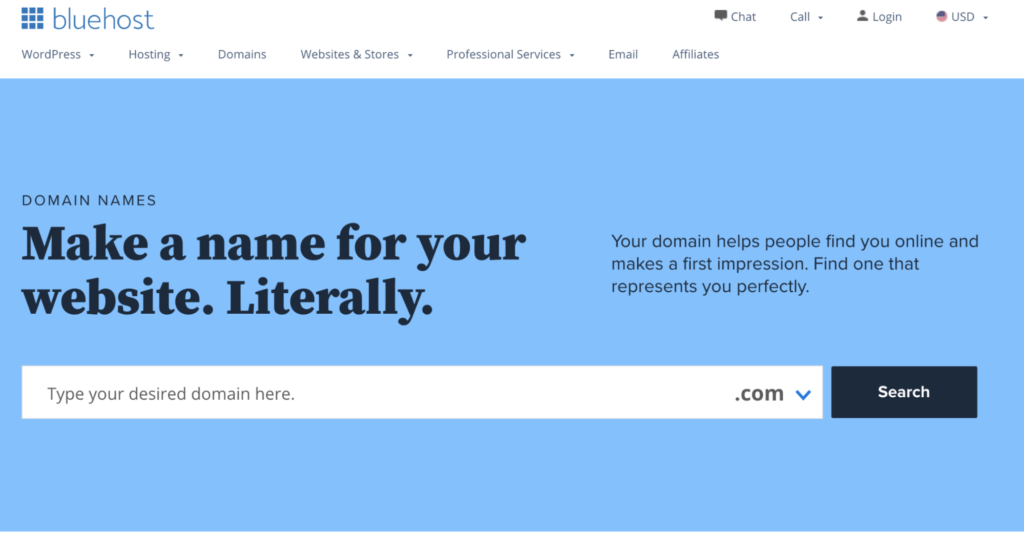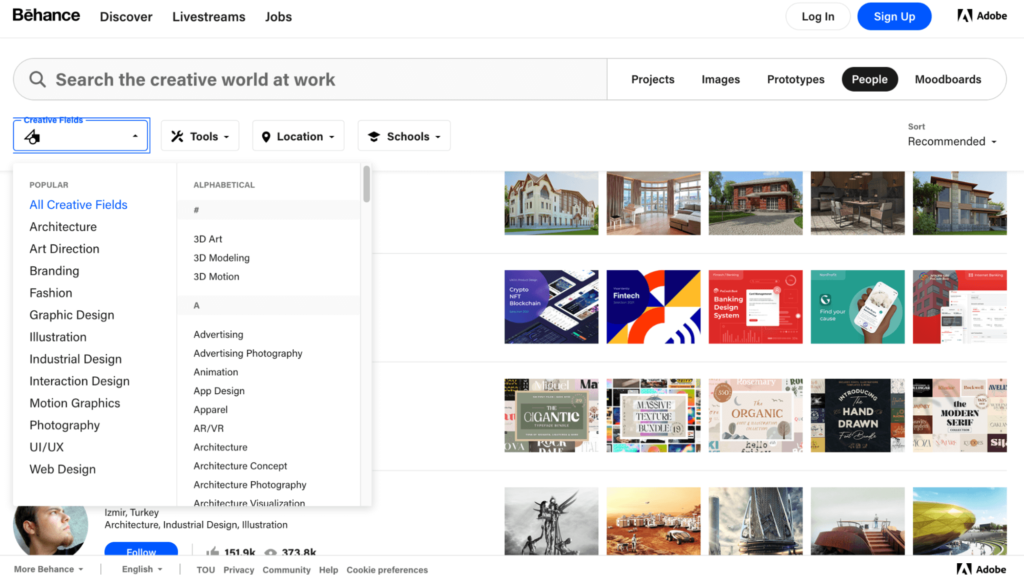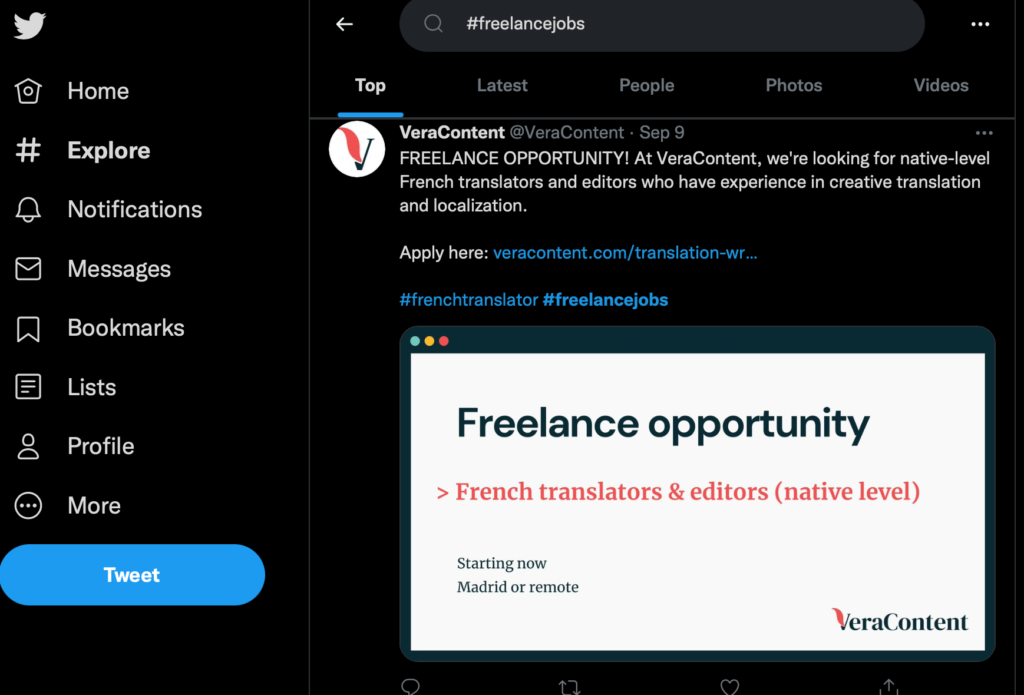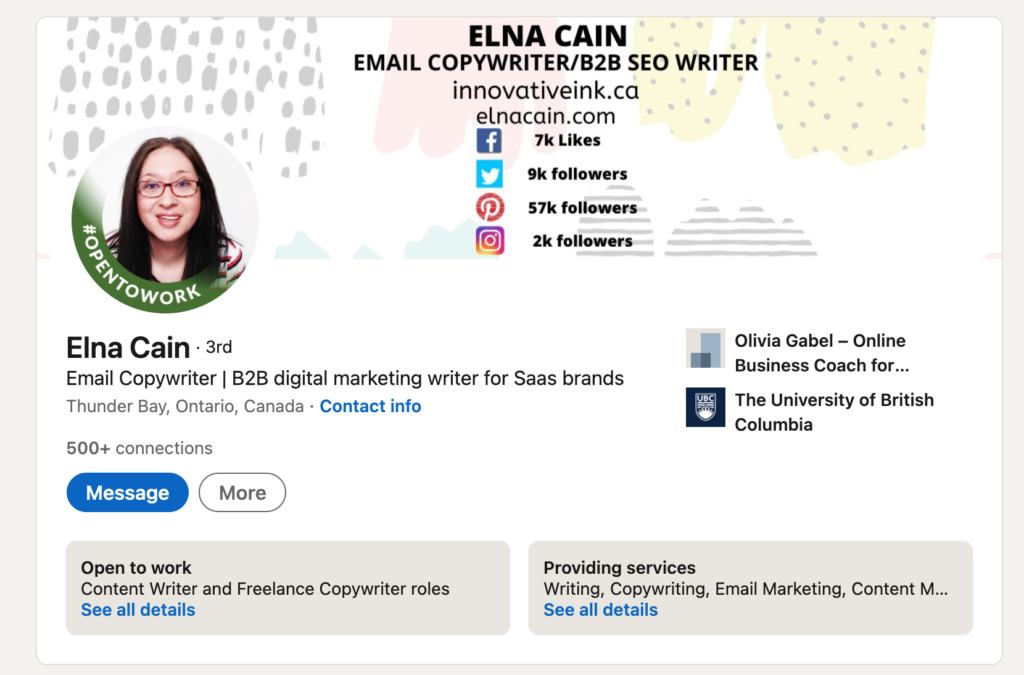Freelance work opportunities are set to double within the next 10 years.
Freelancing requires you to fill all the roles in your business – not just CEO, but customer service and marketer too.
Trying to balance the work while finding clients and promoting your services can be difficult, and overwhelming when you’re starting out.
However, if you succeed, freelancing gives you the opportunity to work a job where you choose your own hours, do work you love, and potentially make a much higher salary than that of a 9-5.
In this guide, we’ll cover everything you need to know about starting a freelancing business, how to get set up, and how to find clients.
The Easy Parts of Starting a Freelance Business
Although freelancing takes a lot of work and dedication, there are many aspects of launching your business that are fast and easy.
Most freelancers create their business digitally, which means there’s very little upfront investment, and they can use software and automation to speed up their business.
This is especially true for the technical aspects of the business, like setting up your social media, or website. Most social media platforms have the option to create a business account, so you can optimize your profile for work and use it to attract clients.
And creating a website can be done in a day – with web hosting providers offering templates for every industry and even including stock photos and examples of web copy. Bluehost even offers marketing services alongside its web hosting, so you can get everything set up using their expertise within a few hours:

The Difficult Parts of Starting a Freelance Business
The hardest part of starting a freelancing business is trying to find clients in a competitive space.
If you don’t have a background in marketing or sales, reaching out to clients and convincing them to hire you can be a big step out of your comfort zone. It’s also difficult to compete with other freelancers who may have more experience or lower prices (or both).
Of course, it’s not impossible to find clients as a new freelancer, but you do have to be prepared for a lot of rejection. It takes a thick skin and a lot of patience to keep working to start a business that might not yield immediate results.
It can also be hard learning how to navigate the workload and be your own boss. If you haven’t worked for yourself before, you’ll have to learn how to say “no” to work that isn’t a good fit, how to manage your time efficiently, and how to stay organized with multiple clients and deadlines.
It might take a while for you to find a system that works for you, and to feel like the time you’re investing is worth the money you’re making. Patience is an essential skill in freelancing, but it’s not always an easy one to learn.
Step 1: Get Organized
Freelancing is a lot of work. You have to do everything yourself (or within a small team) and you’re responsible for every aspect of the business.
This requires you to be extremely organized, determined and to have a strong plan before you launch. That’s why taking time to make sure that your business is organized is essential to success – it’s easy to get overwhelmed within the first few months, or to give up due to burnout.
You should take some time to get clear on what you want out of your freelance business, and the type of income you want to make.
Here are the things you need to do before you launch:
Choose Your Service
Before you do anything else, you’ll need to decide what type of service your freelance business will offer.
Most freelance businesses offer digital services because they cut down the cost of upfront investment and transport, but you can start a freelance business that offers physical services like a freelance makeup artist or stylist.
When deciding on what type of service you’ll offer, ask yourself these questions:
- What do I have professional experience in?
- What do I have academic experience in?
- What am I passionate about?
- What can I learn to do?
- How much will I need to invest?
Freelancing takes a lot of dedication and patience, so it’s important to choose something you genuinely enjoy. You also need to choose something that you can really learn to do or that you’re already an expert in.
Most freelance industries are already very competitive, so it will be hard for you to push into an industry if you can’t show potential clients that you can bring them a return on their investment.
Choose Your Niche
Once you’ve decided on the service you’re offering, you’ll need to niche down further.
As mentioned before, freelancing is competitive, regardless of which service you offer. And when you’re just starting your business, you need to find a way to make clients choose YOU.
Niches enable you to do that – you choose a topic in your industry to focus on and make yourself THE freelancer for that topic.
If you want to start a freelance writing business, for instance, you might niche into writing blog posts about parenting. Or as a web designer, you might niche into designing catering sites.
You can ask yourself the same questions when choosing your niche as you did when choosing the service you’ll provide. Just make sure that you’re also choosing a niche that’s in demand and that has the potential to be profitable.
Choose Your Business Name
You need a name that’s relevant to your industry, that’s memorable, and that hasn’t already been taken. Some freelancers choose to use their own names, while others look for something that fits within their niche.
You also want something that’s available on social media and as a domain for your branding. You can use Bluehost’s domain checking tool to find out whether or not the URL for your business name is available:

Decide On Your Target Audience
Once you’re clear on your niche, you’ll need to work out who your target audience is going to be.
You’ll need to target clients in your niche that need your services, can afford your rates, and work with freelancers. You need to think about which problems you solve, and who other freelancers in your niche are working with.
Make a list of all the businesses you’d like to work with, or that you think you could help. Check their marketing budget if you can find it, and any that have a sizable amount should be at the top of your email list when it comes to finding clients.
Step 2: Get Set Up
Once you’ve put together a plan and you know what you’ll do and who you’ll help, you’re ready to get set up online.
Even if you’re planning on starting a freelance business that requires you to provide physical services, you’ll need a strong online presence for marketing yourself.
This includes having a website that clearly states what you do and who you help, and having social media accounts that showcase your work and make it easy for clients to find you.
Here are all the things you’ll need to set up before you can find clients:
Your Website
Setting up a website with a professional domain makes it easy for clients to find you, makes you look professional, and helps you showcase your work.
Setting up a website can be done in a day, especially if you go through a hosting service like Bluehost, which offers free WordPress installation and website templates for every industry.
All you need to do is choose a template in your field, and then update it with your own copy and photos. Bluehost also comes with a free domain included, 24/7 support, and a SS certificate for your website. They even have a site builder so you can get creative with your site and portfolio:

Make sure that when you write about your services on your site, you make the copy customer-focused. Avoid talking too much about yourself and your journey, and focus instead on talking about how you’re going to help your customers and what you can do for them.
Set up Your Social Media
Once you’ve set up your site, you can set up business accounts on social media as a freelancer.
Which platforms you choose to be most active on will differ depending on the industry you’ve chosen, but it never hurts to set up one for each.
Social Media is a great way to market yourself and find freelance clients – or to showcase your work if your freelancing business provides visual services, like graphic design or makeovers.
When setting up your social media, make sure that your branding is consistent with your website. Opting for a business account will also help you look more professional and make it easier for clients to contact you.
Register Your Business
Not all freelance businesses will require a license or immediate registration with the local government.
Whether YOU need to will completely depend on what services you’re providing, and if you’re doing something that needs a certification or license, like a freelance hairstylist or makeup artist. You need to check your local state laws and possibly a local attorney to find out what’s required for your business to stay compliant.
If you’re looking to turn your freelance business into an agency or outsource to other freelancers, you might need to register for an EIN. You may also want to consider registering as a sole proprietor, to avoid being personally liable for any issues that arise through your business.
Step 3: Create a Portfolio
When you’re just starting your freelancing business, you won’t have a big reputation to fall back on.
This means that you need to show clients they can trust you by giving them examples of your work. Having a portfolio on your website and across your social media gives you credibility and lets clients know that you’re able to provide them with value.
Your portfolio should only showcase your best work, and it should be clear and easy to navigate for any potential clients.
Here’s what you’ll need to do to have a portfolio that attracts high paying clients:
Create Samples
Once you’ve set up an online presence, you need to create work that you can show to clients to prove that you’re worth the investment.
You might be lucky enough to already have examples of your work to put in a portfolio. For instance, if you’re pivoting from a career as an office manager, you may be able to take some of the emails you wrote and showcase them in your portfolio as a virtual assistant.
If you don’t already have samples, though, you’ll need to take some time creating some. Take inspiration from what other freelancers you admire are doing, and create two or three examples of your own that you put in your portfolio so clients know that you’re skilled.
These could be a few articles, a collection of photographs, or a website you’ve designed. Just make sure that everything in your portfolio is your best work, and don’t show anything that isn’t impressive or high quality.
Volunteer Your Services
If you want to get samples for your portfolio that show experience working with clients, you can potentially start by offering a few free, or low-cost services to people.
As a writer, you might write guest posts to get your name out there and get live links to published writing. If you want to be a freelance photographer, you might offer to shoot a friend’s wedding for free, or at a discount.
It might seem like a counterintuitive idea to offer free work, but while you’re building up your reputation, you need to prove to clients that you have real experience freelancing in your industry. You’ll also be able to get some recommendations and reviews to showcase on your website, helping you boost your credibility.
Add a Portfolio Section to Your Website
Once you have some samples ready, you need to showcase them on your website. Some themes and websites will already have a portfolio section attached, but others might not.
If that’s the case, you can download a portfolio plugin that will help you display your work clearly. You can play around with the design and get creative, but ALWAYS prioritize clarity and UX for clients.
Some of the best portfolio plugins you can look at include WP Portfolio, Gridkit Portfolio Gallery, and Visual Portfolio.
Join Portfolio Platforms
Once you’ve created your own portfolio, you can boost your chances of getting discovered by joining portfolio platforms.
These will enable you to add your work to big networks, alongside other freelancers in your field, giving you exposure to a much higher number of clients than your own portfolio.
Make sure you research the best ones for your niche and industry because there are hundreds out there and they all cater to different freelancers. Some of the most popular ones include Behance, Viewbook, and Pressfolios.

Step 4: Find Clients
By now, you should be ready to start looking for your first client.
This is where the real challenge starts because you’re up against a lot of competition and you need to make clients choose you.
It’s important to try and be strategic when choosing your first clients. It can be tempting to take whoever says yes first (even if they pay a low rate) but you want to try to find quality clients that give you work you’re proud to showcase in your portfolio.
Here are the best places to find your first clients and start building up your business:
Emailing
Both cold emailing and warm emailing are great ways to connect with clients.
Warm emails obviously have a higher success rate – but cold emails work too. Pitching your services to clients can seem scary, but if you do your research and target clients that you KNOW you can provide value to and who have a budget for hiring freelancers, there’s no reason you won’t get a response.
If you want to start with a warm lead, reach out to potential clients first to praise their business or to offer them some free value. This will help you establish a positive relationship with your potential client before you ask them to invest in you.
Job Boards and Postings
There are plenty of job boards out there that advertise for freelancers or temporary work.
Realistically, you might have to look through a lot of listings before you find one that pays well enough to be worth your while, but when you’re first starting out, they can be really helpful.
Each niche and industry tends to have its own job boards (e.g. Contena or ProBlogger for writers) so take a look at the best ones in your niche and bookmark the page so you check it every day.
You should also look for a newsletter on jobs in your niche. Lots of bloggers create newsletters or Patreon groups with a round-up of the day’s job listings for freelancers. Subscribe to as many in your niche as you can, to get a feel for the types of jobs available and which ones are paying highly.
Social Media & LinkedIn
Your next biggest asset for finding clients is social media.
Joining Facebook groups in your niche, Twitter hashtags, and LinkedIn groups can help you connect with clients and network with others in your industry to find openings.
You can also use LinkedIn’s job search to look for remote work, and connect with clients you’d like to work with. If you add keywords about your niche to your bio, it will also make it easy for clients to find you when they’re searching to fill a position.

Content Mills
Content Mills can help expose you to thousands of potential clients – but they really should be a last resort.
This is because content mills are so competitive and attract such low-paying clients that you’re likely to find yourself tied into a contract that offers very little pay in return for a lot of work.
If you’re really struggling to find work at the start, you can use content mills to get your first clients, but make sure that you’re being valued by your clients and be on the lookout for scams. Some of the most popular content mills include Upwork, Fiverr, and Freelancer.
Step 5: Market Yourself
Once you’ve found a couple of clients (or even while you’re still looking) you need to focus on your marketing and branding.
Just like finding clients, this can be tricky because it relies on being able to stand out from the competition and convince clients to come to you.
But, just like choosing a niche, good marketing is essential to success. Marketing yourself the right way will also cut down the time you waste looking for clients and cold emailing, and help you focus on completing the work and growing your brand.
Here are some of the ways you should market yourself to attract higher-paying clients:
Get Client Testimonials
Once you’ve worked with a few clients, reach out to them to get testimonials or reviews.
As soon as you do, add these to your site and across your social media. Testimonials are one of the most powerful ways you can grow your business and get clients to trust you – so much so that 72% of consumers say that positive testimonials increase their trust in a business.
Keep adding social proof to your business in the form of glowing reviews and client recommendations, and you’ll start attracting clients without having to do any outreach whatsoever.
Optimize Your LinkedIn
If you want clients to find you through LinkedIn, you need to make sure that it’s optimized to attract the right ones. This includes adding keywords to your bio, changing your status to ‘for hire’, and including accreditations and certifications to your profile, as well as creating posts with hashtags and connecting with potential clients in your niche.

Add SEO to Your Website
Understanding SEO can be a little tricky and can take a little time to come into effect, but adding keywords to your website and making sure it loads fast can make a big difference in how easily clients can find you.
You also want to make sure that any images or plugins are loading quickly so that you don’t lose potential clients due to a slow website.
Use Content Marketing
Content marketing is a great form of marketing because it requires next to no upfront investment and it’s very effective at bringing in new business.
You can add a blog to your website and write articles about your niche, or you can start a podcast where you talk about your services and industry. You can also create content on Youtube or on Social Media, like creating tutorials to help others in your industry.
This helps clients find you, and it also helps to establish you as an expert in your industry. It can also mean that people who’ve seen your content will refer you to potential clients because they know that you’re a specialist in what you do.
via https://AiUpNow.com September 26, 2021 at 12:05PM by Lars Lofgren, Khareem Sudlow,
